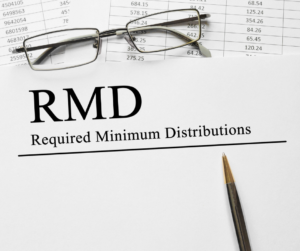Required Minimum Distributions are an important aspect of retirement planning, specifically for individuals with tax-advantaged retirement accounts such as Traditional IRAs and 401(k)s. While RMDs ensure that retirees access their retirement savings, they can also have negative consequences on taxes and retirement. This article will explore how RMDs can impact taxes and retirement planning and discuss strategies to mitigate these potential drawbacks.
1. Taxation of RMDs:
One of the primary concerns with RMDs is their tax implications. When individuals reach a certain age, (70 ½ for those born before July 1, 1949, 72 for those born between July 1, 1949-1950, 73 for those born between 1951-1959, and 75 for those born in 1960 or later) they are required to withdraw a certain portion of their retirement account each year as RMDs. These distributions are generally subject to ordinary income tax.
The taxable nature of RMDs can increase an individual’s taxable income, potentially pushing them into a higher tax bracket. This can result in higher tax liability, reducing the amount of funds available for retirement expenses. Moreover, the additional taxable income from RMDs can have a cascading effect, impacting the taxation of Social Security benefits and other income-driven benefits or deductions.
2. Impact on Retirement Income Strategy:
RMDs can disrupt an individual’s retirement income strategy, especially for those who rely on tax planning to manage their income streams. Retirement planning often involves a delicate balance between taxable and tax-advantaged accounts to optimize tax efficiency and maximize retirement income.
However, the mandatory nature of RMDs can disrupt this balance. When individuals are required to withdraw a specific amount from their retirement accounts, it can limit their ability to control their taxable income. This can result in less flexibility in managing tax liabilities and potentially limit the effectiveness of other tax planning strategies, such as Roth conversions or capital gains management.
3. Potential for Increased Medicare Premiums:
RMDs can also impact an individual’s Medicare premiums. Medicare Part B premiums are means-tested, meaning they are based on an individual’s modified adjusted gross income (MAGI). RMDs, being taxable income, can increase MAGI and subsequently raise Medicare Part B premiums.
The standard Medicare Part B premium is a fixed amount for most individuals. However, high-income retirees may be subject to an Income-Related Monthly Adjustment Amount (IRMAA), which increases their Part B premiums. RMDs can potentially push individuals into higher income brackets, resulting in higher Medicare premiums, thus reducing the amount available for other retirement expenses.
4. Impact on Estate Planning:
For individuals who intend to pass their retirement accounts to heirs, RMDs can have implications for estate planning. Beneficiaries inheriting retirement accounts, such as Traditional IRAs, are also subject to RMDs, albeit with different rules and timelines.
If the account holder passes away before the required beginning date for RMDs, the beneficiary must take RMDs based on their life expectancy. This can accelerate the depletion of the inherited retirement account and result in a higher tax burden for the beneficiary. Consequently, the tax-efficient transfer of wealth may be compromised, and the intended legacy may be diminished.
Mitigating Strategies:
While RMDs can have negative impacts on taxes and retirement, there are strategies individuals can employ to mitigate these effects:
- Roth Conversions: Consider converting a portion of Traditional IRA funds to a Roth IRA before reaching the RMD age to minimize future RMDs and potentially reduce tax liabilities.
- Qualified Charitable Distributions (QCDs): Make direct charitable contributions from the IRA to satisfy part or all the RMD. QCDs can reduce taxable income, potentially lowering taxes and Medicare premiums.
- Strategic Withdrawals: Develop a withdrawal strategy that optimizes tax efficiency and minimizes the impact on taxable income. Coordinating RMDs with other income sources can help manage tax brackets.
- Estate Planning: Evaluate the impact of RMDs on estate planning goals. Consider alternative strategies, such as gifting retirement assets during the individual’s lifetime or implementing trusts to manage the tax burden on beneficiaries.
While Required Minimum Distributions ensure that retirees access their retirement savings, they can present challenges in terms of taxes and retirement planning. The taxable nature of RMDs, their impact on retirement income strategies, potential Medicare premium increases, and implications for estate planning all underscore the need for careful consideration and proactive strategies to mitigate these negative effects. By understanding the potential drawbacks and employing appropriate planning techniques, individuals can better navigate the complexities of retirement taxation and optimize their retirement savings.
If you would like to see how managing your taxes in retirement can benefit you contact my office and schedule a free initial consultation.
